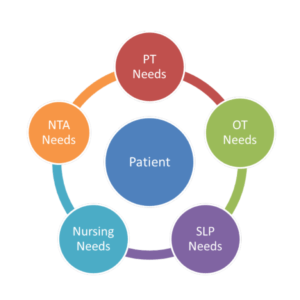The carrot or the stick? Paying for nursing home quality
Last week, Ohio added itself to the growing list of states that are experimenting with pay-for-quality programs for nursing home reimbursement.
The real news peg is the amount: Almost 10 percent of Ohio’s skilled nursing Medicaid pay rates will now be dependent on performance metrics—the highest percentage rate among the nine other states that have enacted pay-for-quality programs (California, Colorado, Georgia, Iowa, Kansas, Nevada, Oklahoma, Utah and Vermont).
The new Long-term Care Quality Initiative includes 20 quality measures within five categories, including satisfaction survey results, residents’ rights to choose, clinical issues and infection rates, resident environments, and staff retention/turnover.
Each of the 20 quality measurements includes the minimum requirements to receive the “quality incentive point” for that measure. For example, in order to earn one point for the measure of “satisfaction surveys,” a facility must have overall customer satisfaction survey scores of 86-88 percent. Sounds OK so far.
Here’s where the new state system has lost me: In Ohio, it only takes 5 of the 20 quality measures to qualify for the full Medicaid reimbursement.
Apparently, we’ve taken a stand by saying, “these are the things we believe are crucial”—but in the same breath, we’ve sent the message that if you don’t accomplish three-quarters of the things on the list, it’s OK.
How can it be an indicator of quality if almost everyone passes? According to a Columbus Dispatch news story, only five of Ohio’s 970 nursing homes didn’t make the minimum grade.
More importantly, what kind of incentive is it when there’s no reimbursement difference between the facility that meets 18 of the 20 measures and the facility that meets 5 of the 20?
John Alfano, president and CEO of LeadingAge Ohio, says the program is a good start, but now it needs to be tightened to reward based on levels of quality, not a generic baseline.
“We need to ratchet up the numbers that people have to achieve, and we need to re-evaluate what we have,” he says. “We need to use quality measures that are truly reportable. And some of the quality measures should be weighted heavier than others.”
Ohio’s Long-term Care Ombudsman, Beverley Laubert, had originally suggested that the threshold be set at 15 out of 20. (If that were true in your state, would your facility have passed?)
Meanwhile, Ohio’s Unified Long term Care Workgroup’s Reimbursement Subcommittee (of which Alfano is a member) is already studying ways to improve the program, seeking feedback from nursing facilities on potential changes that will incentivize quality in both clinical aspects and business aspects.
By the way, 5 out of 20 is 25 percent. In school, it takes 50 percent just to get an F.

Pamela Tabar was editor-in-chief of I Advance Senior Care from 2013-2018. She has worked as a writer and editor for healthcare business media since 1998, including as News Editor of Healthcare Informatics. She has a master’s degree in journalism from Kent State University and a master’s degree in English from the University of York, England.
Related Articles
Topics: Advocacy , Executive Leadership , Medicare/Medicaid , Regulatory Compliance










